A Burning Question
Muirburn – the controlled burning of vegetation for land management purposes – has been practiced for centuries, but as the Scottish Government reviews its policy on wildlife management and muirburn, is repeatedly burning our landscape really the best way to protect it?
‘I’m not trying to scare you, but it’s serious,’ Ed Townley says on the phone to his partner Becca.
The young couple had only just finished fixing up their cabin at Dubh Allt, an off-grid croft on the Kinlochmoidart peninsula, when a devastating wildfire threatened their lovingly restored home. ‘We’d been sleeping on the floor for the whole of winter,’ recalls Ed. ‘And we’d just finally moved back into our bedroom. Becca was on her way to Inverness to pick up her sister and niece who were visiting us for the first time.’ But then someone set the hill on fire.
It seems hard to believe that anyone would do anything so reckless, but Ed is convinced the fire was started deliberately. ‘If you go up there, you can see multiple spots where someone lit the fire for maximum effect. The weather was hot, dry and windy. Someone lit the fire, and then walked away.’

Ed and Becca’s home at Dubh Allt
The blaze started on 20 April, less than a week after managed burning is meant to have ended for the season, but within the fortnight when landowners can still choose to burn at their own discretion. The Muirburn Code discourages such late burns because of the risk to ground-nesting birds, but the code also states that fires should not be left unattended, must not cause damage to property or woodland, or endanger people’s safety. Whoever lit this fire had little regard for any of these statutory rules.
‘My neighbour Andy called, asking if I’d noticed the smoke, which I obviously had,’ says Ed, describing the rapidly escalating sequence of events. ‘But I just assumed it was controlled burning on the other side of the hill.’ Twenty minutes later, Andy called again. ‘He made it clear the fire was absolutely not under control, and it was spreading fast.’ Ed headed up the hill, hoping to stop the flames crossing the burn, but met more of his friends coming down. ‘They were panicking – it had jumped straight over the burn.’
‘Everyone agreed that we can’t let this scale of fire happen again.’
With the fire now out of control, their focus switched to saving the cabin. ‘I think we had about half an hour – although obviously at the time we didn’t know how quickly the fire would reach us. We were filling buckets of water, dowsing the roof. And all the time, the heat was growing in intensity,’ recalls Ed. ‘My friends were shouting, “You need to get the things that are precious out of the cabin.” That was when I called Becca. She was in tears, freaking out. I think it was a lot worse for her, not being here.’
At the critical moment, a fire crew from Fort William and a volunteer crew from Mallaig arrived. They were able to pump water directly from the burn to supply a high-pressure hose, saving the cabin. Even so, scorched trees just outside the door show how close the fire came. It burned for 72 hours in all, blackening a vast swathe of the Kinlochmoidart peninsula, all the way from Roshven to Glen Uig.
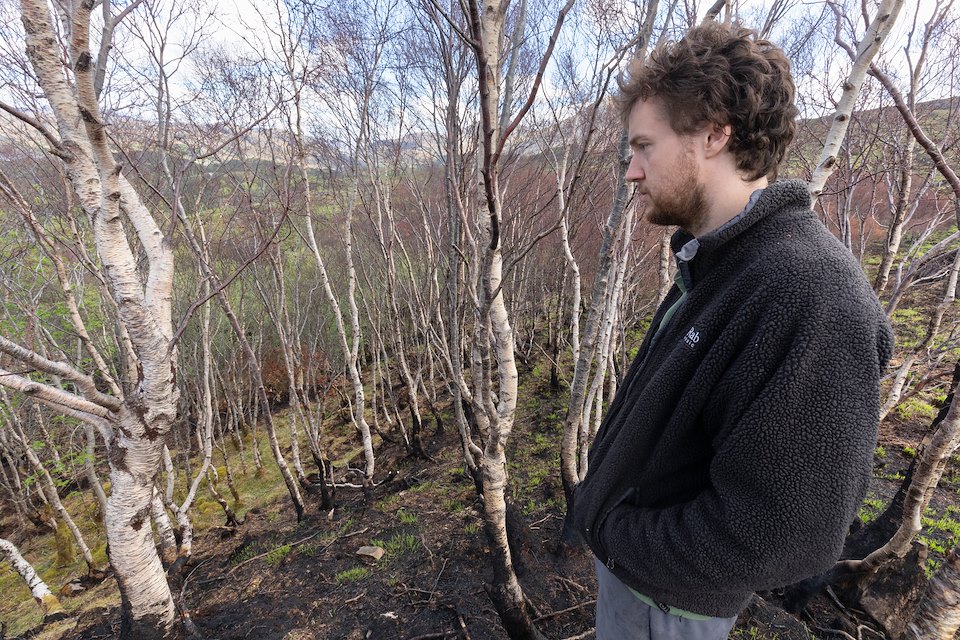
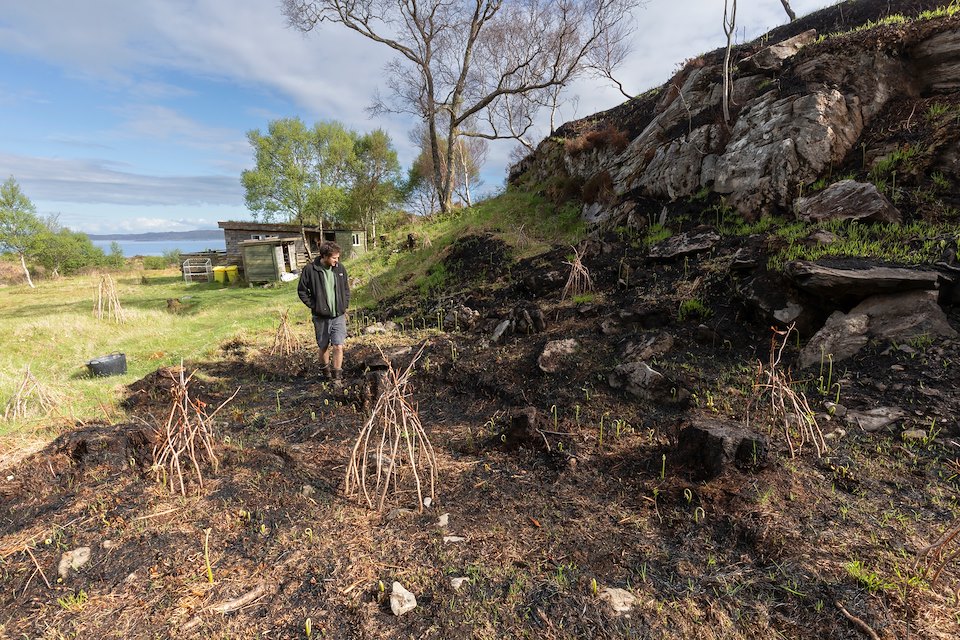
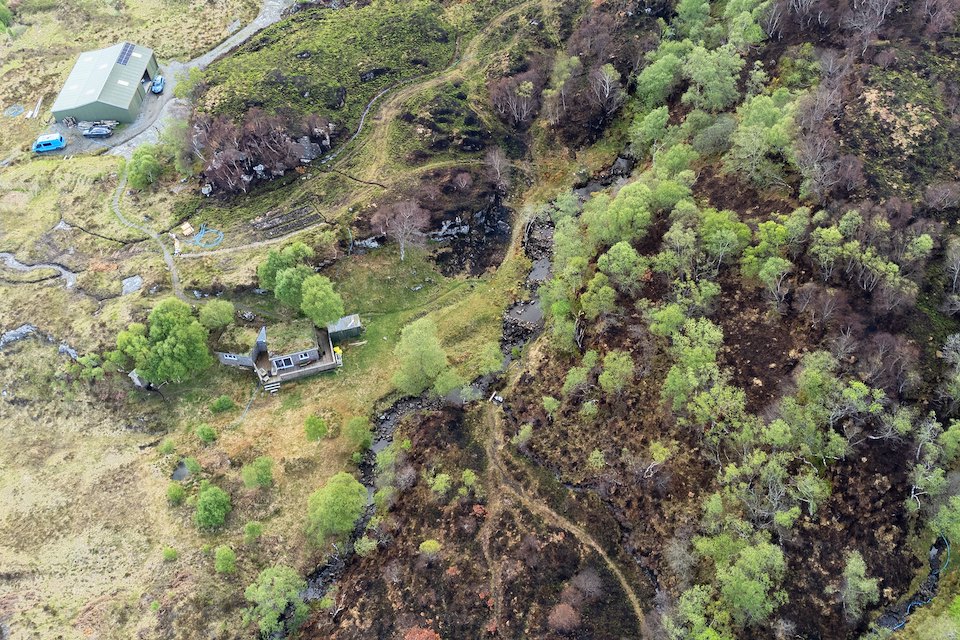
‘The local reaction was unanimous,’ says Becca. ‘Everyone agreed that we can’t let this scale of fire happen again.’ But there’s been less agreement about the best way to realise that goal. ‘There’s been mixed reactions,’ Ed reflects. 'Some people have said they haven’t seen a fire like that in 50 or 60 years, and some have been persuaded that the way to avoid a repeat is to burn more often.’
The thinking behind this idea is that regular burns reduce the intensity of the worst fires. By the same logic, leaving the hills unburned allows a build-up of vegetation. If that longer vegetation catches fire, so the theory goes, the resulting blaze is much hotter and potentially more destructive. This has led some people to question the wisdom of encouraging the regeneration of native woodland.
Some farmers have also suggested a link between increased fire risk and a decline in the number of grazing animals. The National Sheep Association’s chief executive, Phil Stocker, recently claimed, ‘the grazed nature of most of our uplands has, in the past, protected us from out-of-control fires, meaning that when fires occur, as they inevitably will, they are short-lived and easy to control.’ He believes that moves to rewild areas of the uplands will lead to increased risk of wildfires.
But while the risk of wildfire is increasing in Scotland, the narrative that rewilding is to blame should be questioned. The total number of sheep in Scotland has actually remained around 6.8 million over the last ten years, even if there have been some localised declines. And the number of deer on the hills has roughly trebled since the 1960s. So, whether there has been any net change in grazing pressure is debatable. What is certain is that vegetation is getting drier, with moorland habitats dominated by heather, particularly susceptible. But the real cause of increased fire risk is climate change.
As climate change begins to bite, periods of hot dry weather are becoming more frequent, leaving these moorlands tinder dry. Dr Mike Rivington, who researches climate change and land-use changes at the James Hutton Institute in Aberdeen, believes dieback of plants could also become more common in our hotter summers, further increasing the risk of wildfire.
‘We’re definitely not the only ones who have concluded that the best solution is to increase woodland cover across the hills.’
There remain two schools of thought for how best to manage fire risk. One option is to keep burning the hills, constantly reducing the standing fuel load. Such management effectively maintains moorlands as a tinderbox in dry weather, but at least limits the supply of tinder. To Ed and Becca, this option feels a lot like Maslow’s Hammer: if the only tool you have is a match, then everything looks like kindling. Moreover, regular burning also has significant downsides: fires risk killing reptiles and amphibians, threaten ground-nesting birds, inhibit woodland regeneration and exacerbate flood risk as water flashes off bare hills. So, what if we managed the hills differently?
Just across the North Sea, Norway’s uplands have been dramatically reforested following an easing of grazing pressure in the early 20th century. To Ed, who has worked in Scandinavia, this example suggests a different future might be possible in Scotland, offering an alternative to the cycle of constant burning and bare hills. ‘There are people in the community here, who looked at the aftermath of the fire and saw how the woodlands were the only places that escaped. We’re definitely not the only ones who have concluded that the best solution is to increase woodland cover across the hills.’

Southern Norway shares a similar latitude, geology and weather to much of the Scottish Highlands, but with a greater abundance and diversity of vegetation.
Crucially, Ed believes the woodlands stopped the fire because the trees create a wetter local environment, and because there’s less dry fuel available under a woodland canopy. Together, these two factors combine to make broadleaved woodlands an effective fire break. Famously, historical ecologist Oliver Rackham once observed that such woodlands burn like wet asbestos. ‘It’s a combination of things,’ says Ed, explaining how the woodlands dampened down the blaze. ‘There’s less evaporation, due to the shade from the canopy, which keeps the soil and vegetation damp. And then there’s less ground vegetation building up, because there’s less light availability, so the fuel load at ground level is lower.’
If you're enjoying this story, help us tell more.
We believe passionately in the power of compelling stories to help turn the tide for nature recovery. You can help our writers and photographers bring more rewilding stories to life by making a regular or one-off donation.
If you're enjoying this story, help us tell more.
We believe passionately in the power of compelling stories to help turn the tide for nature recovery. You can help our writers and photographers bring more rewilding stories to life by making a regular or one-off donation.
The fire did penetrate the fringes of the Kinlochmoidart birchwoods. Months later, you can still see tongues of scorched ground reaching between the outer trees, but these serpentine salients never got far. ‘At the edge of the wood, the fire burned higher up the trees,’ says Ed. ‘You could see moss and lichen on fire, falling off those trees, and you didn’t want to go anywhere near that, but deeper in the wood it just wasn’t the same. There was no way I was going out on the open hill to fight the fire, but in the woods, I had no trouble because the flames were only knee high.’
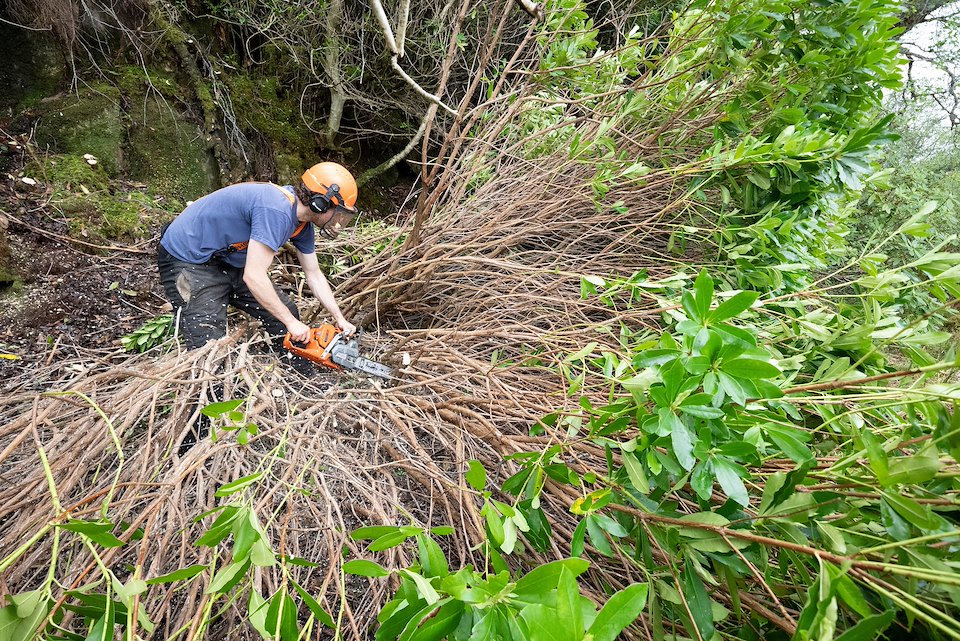
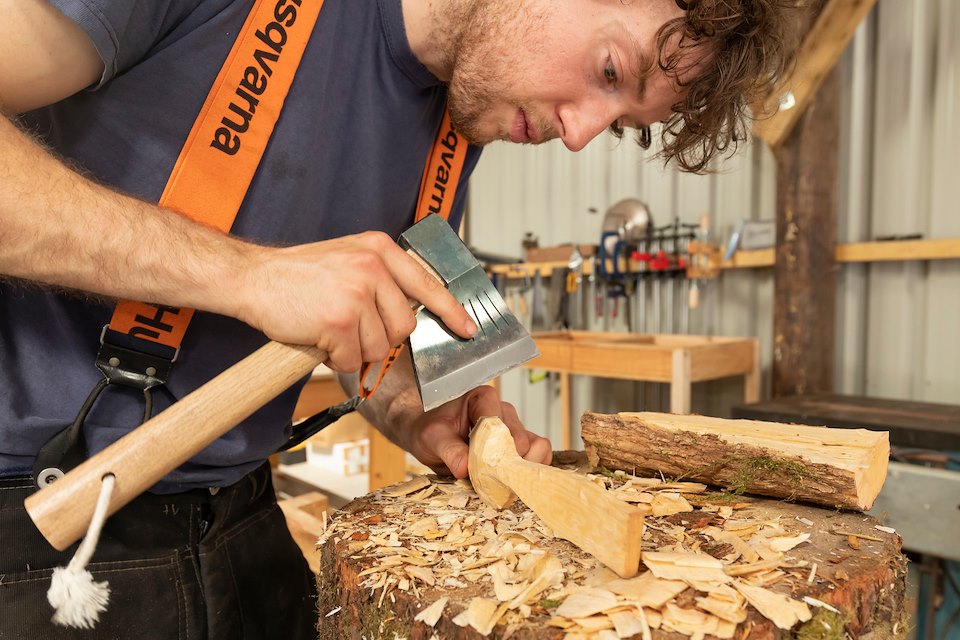
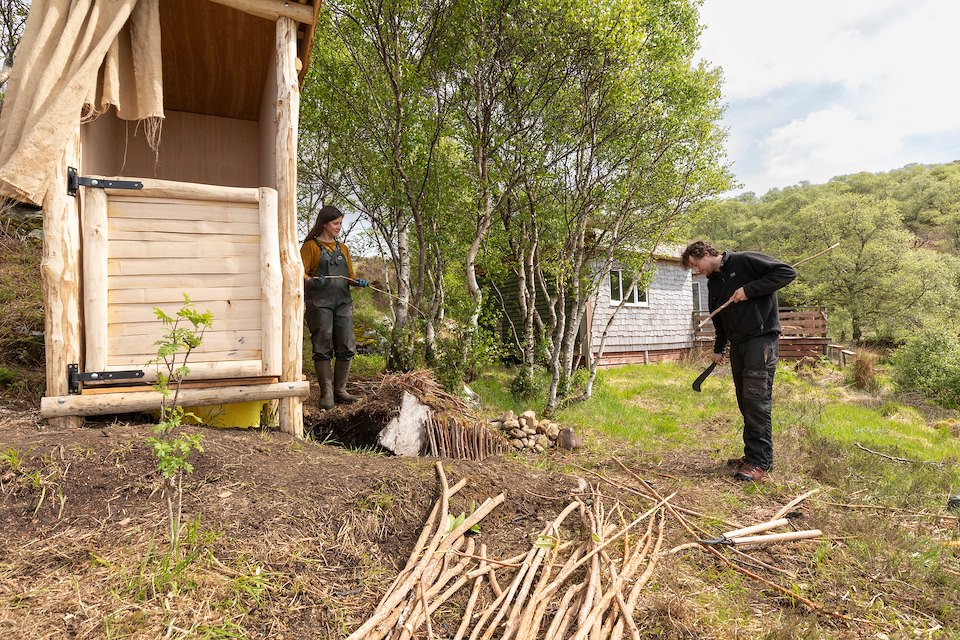
More settled times at Allt Dubh, clearing rhododendron to restore native woodland, crafting local wood and building a composting toilet.
Ed and Becca were already committed members of the Northwoods Rewilding Network before the fire. Now, doubly determined to press ahead with reforesting their bit of hill, the couple plan to employ a drone to scatter birch, alder and willow seed across the burned ground. The hope is that a wood – potentially a part of the rainforest that once fringed much of the west coast of Scotland – will grow up to shield them from future fires. But establishing a resilient woodland requires time – a decade at least – and whether these young trees can ever become a fully-functioning forest, depends on whether or not anyone decides to set the hill on fire.


